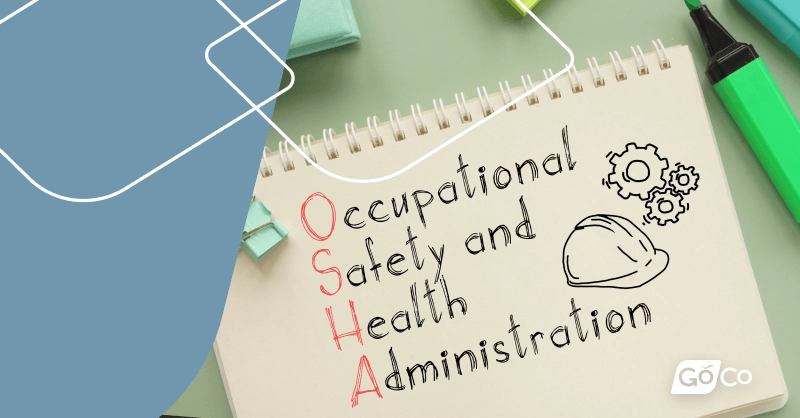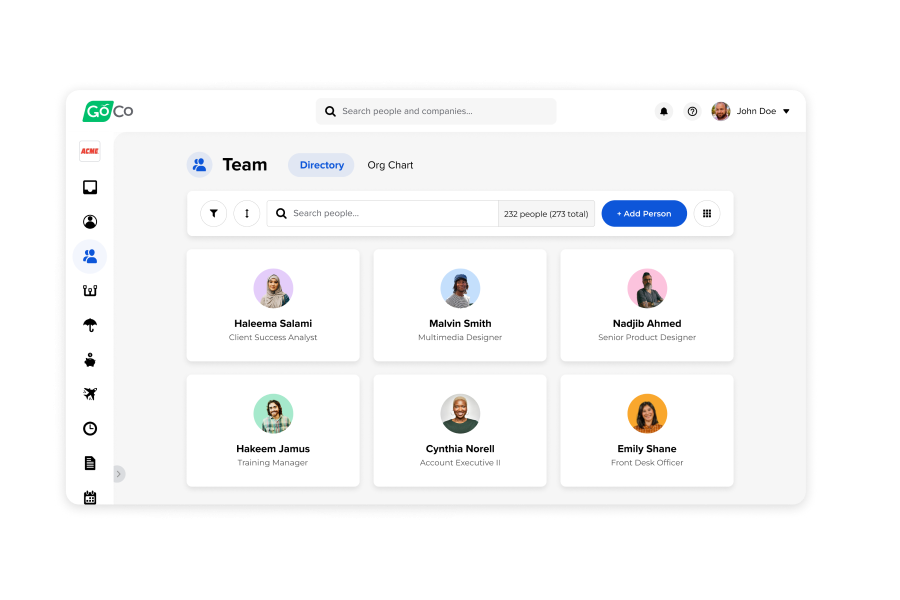HR's Guide to OSHA Compliance and Regulations
A comprehensive guide to what HR pros need to know about OSHA regulations and compliance.
by Anna Coucke - April 1st, 2024
In 2022, there were 2.8 million non-fatal injuries and illnesses in private industry and 5,486 fatal injuries in all sectors! From these statistics, it's clear that Occupational Safety and Health Administration (OSHA) compliance can be a matter of life and death.
If you're in human resources, you're at the forefront of ensuring that your workplace is not just a space for productivity but also a safe one. Too often, people think of office spaces, factories, and worksites as just physical locations where work gets done. However, each setting has unique safety needs and potential hazards.
As an HR pro, part of your duty is to make sure employees feel free from the fear of workplace accidents or health hazards. In this guide, you'll find a rundown of what you need to know to navigate OSHA regulations effectively.
What is OSHA?
Since its inception in 1970, OSHA has been ensuring workers have a safe and healthy working environment by setting and enforcing standards that companies must follow.
OSHA is more than just making and enforcing rules. In addition to overseeing safety standards, OSHA also provides training, outreach, education, and assistance.
Knowing the basics of OSHA is crucial for HR, as your role involves more than handling employee benefits and workplace conflicts; you're the liaison between OSHA's rules and your company's practices.
Who is Protected by OSHA?
You might think OSHA only has its eyes on the hard-hat crew working on skyscrapers, but its reach is much wider. Anybody who steps foot into your workplace is protected by OSHA regulations. That includes everyone from Barbara in accounting to the seasonal interns.
So, if you're in HR, it's your job to ensure that the company's policies include all types of workers, regardless of their employment status. Full-time, part-time, and even contract workers should all be covered by safety protocols.
What does HR Need to Know About OSHA Compliance?
The term "OSHA compliance" may bring to mind a laundry list of tasks that need checking off. While that's partially true, there's a lot more to it. OSHA compliance is essentially the act of following all the standards set by OSHA to create a safe working environment.
This involves everything from ensuring that machinery is in good working condition to providing adequate training for the handling of potentially dangerous equipment. This involves coordinating between departments to ensure that safety measures are implemented and consistent throughout the organization.
Remember, compliance is an ongoing process. Frequent audits and regular updates to safety procedures should be on your radar at all times. If an inspection were to happen tomorrow, your goal is to have nothing to hide. Being compliant means being prepared.
Safety Training: Not Just a PowerPoint Presentation
Alright, let's discuss safety training. You've probably sat through your share of dull PowerPoint presentations, but safety training needs to be engaging because the stakes are high — we're talking about people's lives and well-being here.
To make sure the message sticks, ditch the monotonous slides and bring in interactive training methods. Think of hands-on demonstrations, engaging videos, and maybe even some role-playing exercises.
Safety training isn't just a one-time box to check during onboarding, though. Regular refresher courses are essential for continuous safety because, let's face it, we all forget things and can start picking up bad habits.
Be sure to keep track of who has completed their training and who may be due for a refresher. If you've noticed accidents happening in a specific department, you know where to focus your training resources.
Record Keeping and Reporting Requirements
OSHA has the following reporting requirements for severe work-related incidents:
A fatality must be reported within 8 hours.
An in-patient hospitalization, amputation, or eye loss must be reported within 24 hours.
Yep, the clock starts ticking pretty fast. Also, you have to submit an annual summary of incidents (OSHA Form 300A). For severe incidents, records must be kept at the worksite for at least 5 years.
Keeping a meticulous record of all incidents (minor and severe) and safety measures provides data that can be analyzed to predict and prevent future accidents.
To stay ahead, use these records proactively. Schedule regular meetings to discuss this data and identify patterns. That way, you can nip potential issues in the bud before they escalate into real problems.
Inspections and Whistleblower Protections
OSHA inspections can happen at any time, and if a severe incident was reported at your workplace, you can expect one to occur within 24 hours.
The process may seem nerve-wracking, but it's essentially a check on the effectiveness of your safety practices and a review of how well your company is applying what you've learned about workplace safety. Remember that your organization should always be prepared by staying compliant, so you can welcome inspections as a chance to shine, not as a test you're scared to fail.
Last but definitely not least, let's discuss whistleblowers and inspections. Whistleblower protections are a list of statutes that allow employees to report unsafe conditions without fear of retaliation.
As an HR professional, you should ensure that your team knows they can (and should) speak up. You can create an anonymous reporting system to make sure employees have a secure and confidential way to voice their concerns before the issue grows.
Making OSHA Part of Your Company Culture
OSHA compliance isn't just about setting rules and regulations – it's about culture. Make safety a core value of your organization, something everyone in your organization must practice.
Share success stories and lessons learned from safety incidents during team meetings. To make workplace safety more engaging and rewarding, you can even create recognition programs to celebrate "Safety Heroes."
HR managers, this is your moment to shine by using your communication skills to make safety guidelines easy to understand and follow.
Think newsletters, quick video updates, or even an internal safety blog. The key is to keep the conversation about safety ongoing and inclusive so it becomes second nature for everyone.
Final Thoughts
The staggering number of workplace injuries and fatalities underscores the critical role HR professionals play in fostering a culture of safety in their organizations. By implementing the steps outlined in this guide, HR can ensure a work environment where employees feel protected, valued, and empowered to prioritize their well-being.
At GoCo, we have helped thousands of companies modernize their HR processes – from record-keeping and compliance to time tracking and payroll.
Ready to see how GoCo can enhance your company's HR? Take a tour of our platform today!
Updated 4/1/2024
Recommended Posts
The State of Health & Safety In HR Report
Blog Articles
HR's Guide to Workplace Drug Testing [+ Free Template]
Blog Articles
Search...
Product
GoCo
Resources
Articles
eBooks
Webinars
Customer Stories







![HR's Guide to Workplace Drug Testing [+ Free Template]](/img/containers/assets/goco/featured_images/posts/HRsGuideToDrugTestingAndCompliance_BlogFeatImg.png/efd4a07ad5005fac724b1acb9d8d155e/HRsGuideToDrugTestingAndCompliance_BlogFeatImg.png)